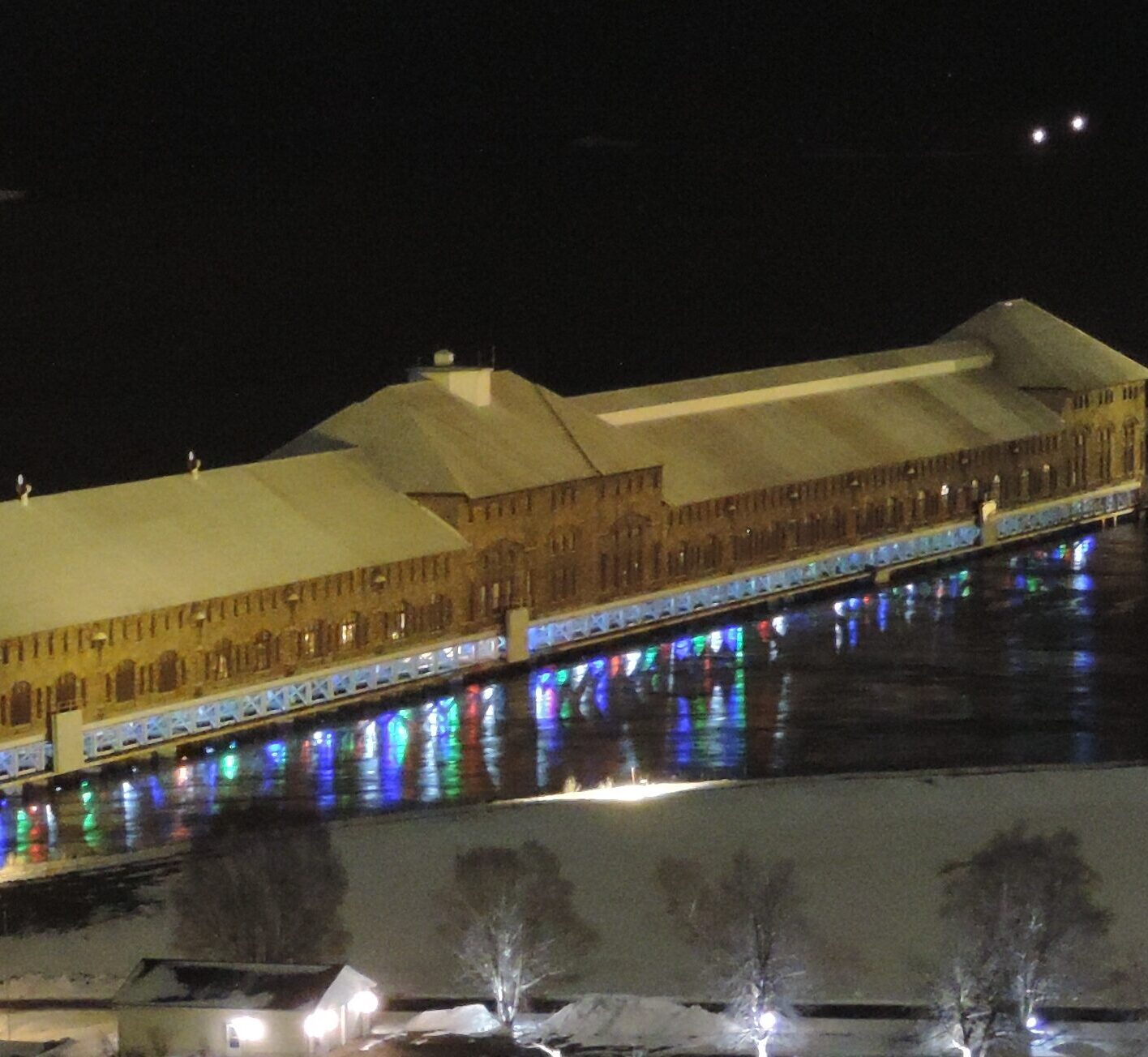
Cloverland Electric Cooperative Hydroelectric Plant
Quarter mile long horizontal shaft hydro plant (longest in the world). The power canal is 2 1/4 miles long, 200 feet wide, and 20 feet deep, going through the center of town, with many portions lined with timber.
The hydro plant is constructed of steel and red sandstone. The stone was excavated from the power canal. The plant is a quarter mile long, 80 feet wide and has 74 horizontal shaft turbines located on the generation floor level. Each turbine has four runners (blades) that drive the 60-cycle generators. The water, which flows down the power canal, drops through gates in the turbines to make them spin, like a child’s pinwheel in the wind. The turbine turns the rotor—the last moving part. The turning creates electricity. To learn more please watch this 10 minute documentary.
As part of Cloverland’s community education program, your electric cooperative offers group presentations in the areas of renewable hydro generation, electric safety awareness and energy efficiency. These activities can be tailored to suit both the age and needs of the audience. Presentations are limited to groups consisting of 12 to 30 persons. Please use the form below to submit your request. Larger groups can be broken into smaller groups.
Requests must be submitted three weeks in advance of the proposed event date and must be approved by the cooperative prior to scheduling. All activities are based upon availability. Hydroelectric plant tours and hotline safety demonstrations are available Monday –Friday, May through October and are contingent upon weather conditions. Please fill out this online application.

Toll Free: (800) 562-4953



